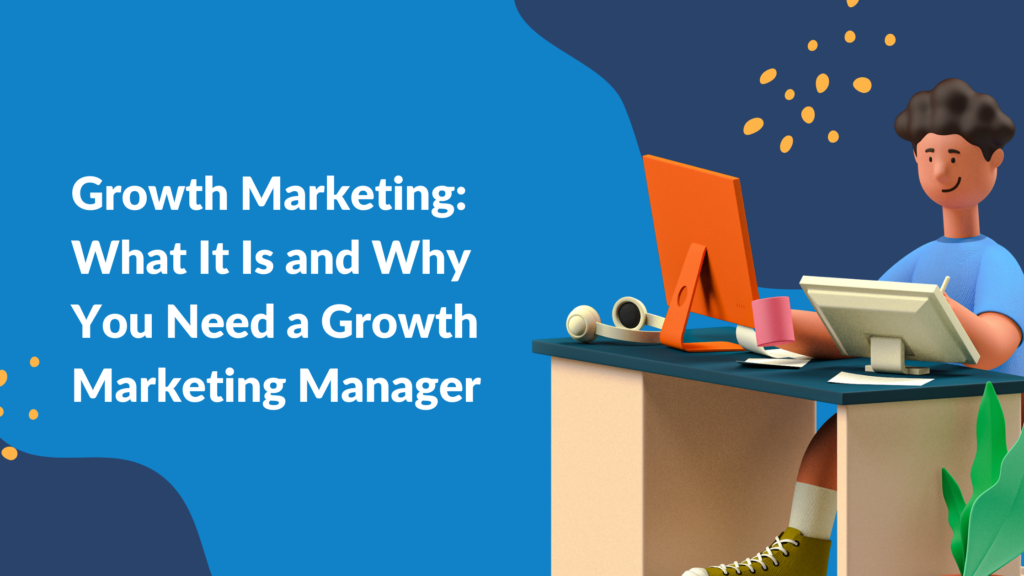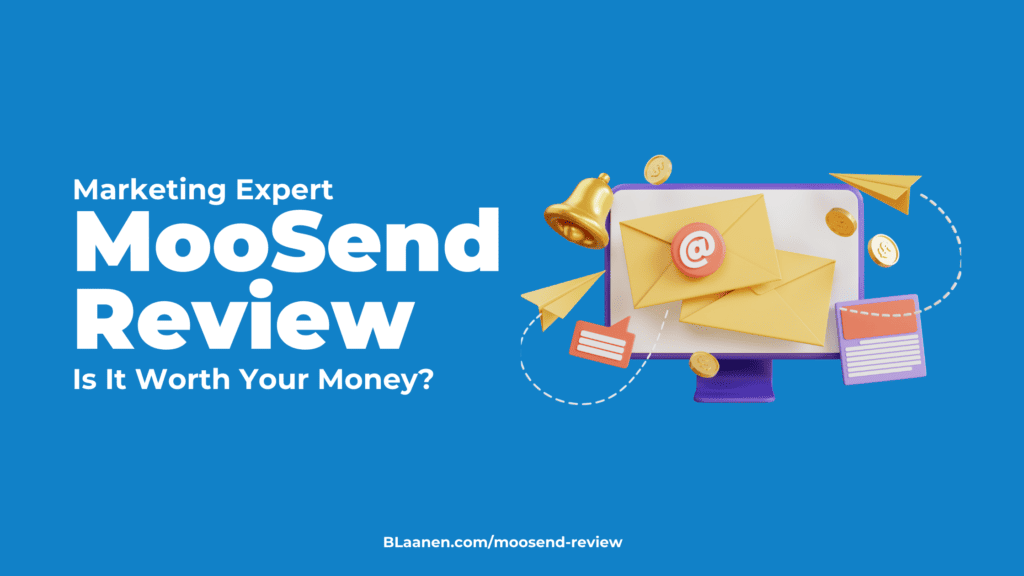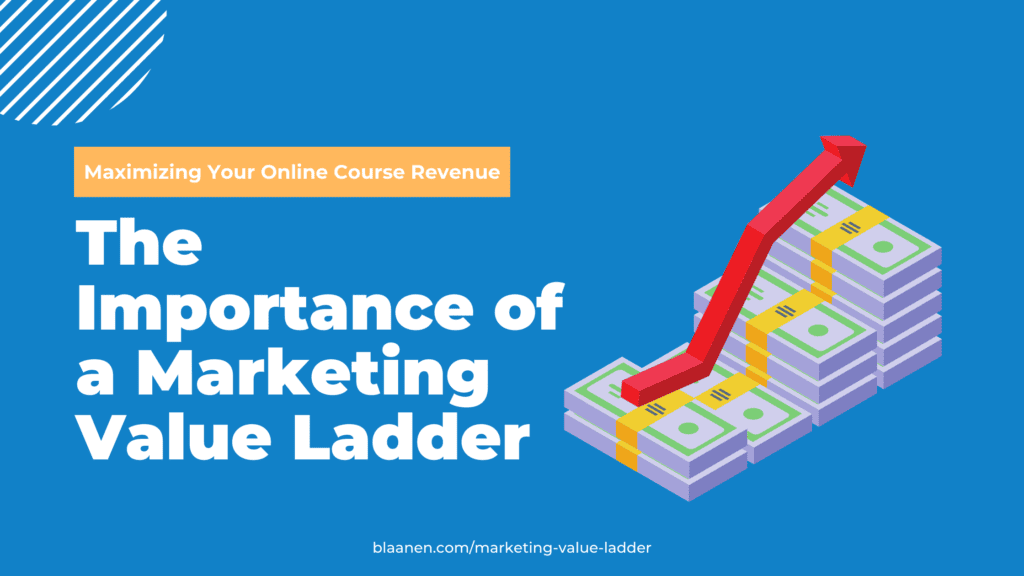As business owners, we always looking for ways to grow our companies. You may have tried traditional marketing methods, but maybe they don’t seem to work as well as they used to. Even more recently developed channels like Facebook Ads are now losing their utility in the face of new privacy policies.
Worry not. Growth marketing is a tried albeit more recent approach that could help take your business to the next level. And even with the marketing landscape changing, growth marketers will continue to find new revenue drivers.
Table of Contents
ToggleWhat is growth marketing?
Growth marketing is a data-driven marketing approach with the sole intent of revenue growth. It focuses on acquiring and retaining customers at a scalable, if not exponential pace.
Growth marketing isn’t just about getting more eyeballs on your website or store. It focuses on improving the customers’ entire journey. From product awareness to the actual sale and the experience as a customer thereafter.
“A growth hacker is someone who has thrown out the playbook of traditional marketing and replaced it with only what is testable, trackable, and scalable. Their tools are e-mails, pay-per-click ads, blogs, and platform APIs instead of commercials, publicity, and money.”
― Ryan Holiday, Author of “Growth Hacker Marketing: A Primer on the Future of PR, Marketing, and Advertising”
Ultimately, strong marketing results are achieved through competent marketing experts who are willing to try many tactics and strategies. And they will be ready adjust the course if unable to produce desired results at first.
Let’s take a look at what sets apart growth marketing vs. traditional marketing.
Growth Marketing Vs. Traditional Marketing
Growth marketing is different from traditional marketing in that marketers focus on the holistic customer journey, and take a data-driven approach.
Marketing Funnel Focus & the Entire Customer Journey
Traditional marketing often involves strategies to build traffic. The aim is to target the top of the sales funnel. Whether that is online, brick and mortar, or some combination there of.
These types of strategies include channels such as Google Ads Display campaigns. This strategy works, yet when you look past the top of the sales funnel it becomes less effective.
Traditional marketing targets awareness and user acquisition. But it doesn’t help to grow the relationship beyond those stages. Growth marketing goes further down the funnel.
A traditional marketing team is responsible only for awareness and acquisition. But, the growth marketing team takes care of the entire funnel. This includes awareness, acquisition, activation, revenue, customer retention, and referral.
Better yet, growth marketers don’t think of the customer journey as a funnel at all. Instead, they should think of it as a flywheel. That means that creating a delightful experience for the customers can become a self-reinforcing wheel to get more customers, and thus grow revenue.
Data-Driven
Growth marketing is data-driven. This means that decisions are based on data and analytics rather than gut feeling to find product market fit and work towards. company goals
Growth marketers are always looking for new opportunities to grow their metrics and to experiment. This means that growth marketers test new ideas to see what works. And what doesn’t?
Further, they take advantage of systems based on loops. The fastest-growing organizations are built on a system of compounding loops. These growth loops are closed systems where inputs generate more and more outputs. And these outputs can be reinvested to generate more outputs. Again, it’s the idea of the marketing flywheel.
SurveyMonkey, for example, has a system of compounding loops that have helped them to grow. They provided more opportunities to use their platform by asking users of their free trial to refer more customers, creating a self-reinforcing acquisition loop.
Re-Imagining the Marketing Funnel as a Flywheel
Marketing funnels are based on the linear model of customer acquisition, where leads are funneled through various stages (awareness, interest, decision, etc.) until they eventually become customers. However, this model is no longer accurate in today’s customer-centric world.
Instead of thinking of the customer journey as a linear funnel, growth marketers should think of it as a flywheel. The flywheel model, championed by HubSpot, starts with the customer at the center, and marketing efforts are focused on moving the flywheel (i.e., the customer) through the various stages of their journey. This approach is more effective because it takes into account the fact that customers are now in control of their journeys.
Our customers are bombarded with marketing messages from all sides, and they have access to information and reviews that can help them make informed decisions. As a result, marketers must work harder to create memorable experiences that will keep customers coming back. This is a crucial part of modern-day customer success.
The flywheel model is a more accurate representation of the modern customer journey, and it should be used instead of the outdated marketing funnel model.
What are the Core Components of Growth Marketing?
There are three core components of growth marketing: A/B Testing, Cross-Channel Marketing, and Customer Lifecycle. Let’s dive into each.
A/B Testing
A/B testing helps to improve metrics and grow the bottom line of the business. Growth marketers use A/B testing to trial new ideas against existing tactics and strategies.
These tests can be within and across marketing channels to drive desired results. Based on test results, new experiments are developed, and the process continues.
Cross-Channel Marketing
It’s a common belief across the marketing and sales worlds that as many as 14 touchpoints are needed before a customer decides to buy a product or service. That’s why growth marketers focus on more than just one channel. And often broader than just online marketing too.
With this approach, more opportunities to reach the right audience can occur in more sales. This could include offline media such as print, TV, or radio. It’s called cross- or omnichannel, because growth marketers reach the target audience across a variety of mediums. These can occur at different or multiple stages of the sales funnel.
Customer Lifecycle
By understanding the customer lifecycle, growth marketers can create more effective marketing campaigns. That’s important because impressions and clicks on ads are not enough to turn to determine the success of a marketing campaign. The down-funnel results are more important. For example, an ad campaign that has a more expensive click per cost may produce a higher return-on-investment further down the funnel.
By understanding the full customer lifecycle, growth marketers produce more sales and a higher customer lifetime value.
What are the Core Growth Marketing Strategies?
There are four core strategies that growth marketers use to grow their businesses:
Search Engine Optimization:
Google is one of the few companies in the world that have spurred their own marketing industry. Yes, Search Engine Optimization is about getting the link to your website ranked at the top of search engine result pages (SERPs) for any search engine. But let’s be real, the engine that matters most is Google.
A proper SEO content & backlink-building strategy helps reach new customers searching for a customer’s products or services. As such, SEO can satisfy both informational (top of funnel or awareness stage) as well as transactional (bottom of the funnel or conversion stage) searches.
Have you ever done a “best of [insert product or service category]”? That’s a transactional search. Most growth marketers will interpret this type of search with high intent. If your website is unable to get to the top of high-intent keywords, you may be able to work with top-ranking websites to direct their traffic to you as an affiliate.
Social Media:
Social Media is used to reach new audiences, connect with existing customers, and at it’s best, used to create a community around a brand. Creating a successful community requires a common interest or goal that others want to accomplish.
If the product or service aligns with the community’s goal, marketers have a group that will continually buy every new product that is put out. Or for subscription services, continue to renew.
Jasper.AI is a great example of this. They have an AI copywriting tool that produces better outputs with creative inputs. By forming a Facebook group around the use of their product, customers help each other get the most out of the Jasper.AI product. It’s a win-win for both the company and their customers.
Paid Advertising:
Too many of us are guilty of buying something we didn’t know we needed from Instagram. That’s exactly why growth marketers use paid advertising to reach new customers who might not be aware of a product’s need or fit.
Paid advertising can be a great way to grow your customer base even if it doesn’t translate into a direct conversion. Just by getting someone to follow your Instagram or LinkedIn page, you have the ability to reach new customers who can be a great fit. A growth marketer will help businesses focus on optimizing marketing spend across multiple channels.
Email Marketing:
If you’ve heard that email marketing is dead, you’d be…dead wrong. Like it or not, email (even snail mail) is here to stay.
Why is that? Well, when you’re in your email inbox, growth marketers know they have your undivided attention. This gives them a great opportunity to stay in touch with their customers and promote new products or services, even if it’s at a discount.
What Does a Growth Marketing Manager Do?
The specific roles of a growth marketing manager vary between organizations, but their primary responsibility is to identify growth opportunities to improve key performance indicators (KPIs).
Typical examples of KPIs are reduced customer acquisition costs (CAC), higher customer lifetime value (LTV), and increased customer satisfaction. All of these increase revenue and the profit margin, which can be re-invested into the business.
This can all be done with a very narrow scope, such as for one product or marketing channel. Often though, especially small businesses, it will seem like a growth marketer has a hand in every marketing pot.
Below are the common duties of a growth marketing manager:
Marketing Strategy & Planning
A growth marketing manager is responsible for developing and executing marketing strategies that will help a company to grow. This includes identifying new markets and target audiences, as well as designing campaigns that will engage these audiences and encourage them to take action. In addition, a growth marketer must also track results and KPIs closely in order to gauge the success of their campaigns and make necessary adjustments.
Without a doubt, a successful marketing strategy can be the key to driving substantial business growth. Consequently, a growth marketing manager must possess a deep understanding of marketing principles and best practices in order to develop truly effective campaigns.
Data Analytics and KPI tracking
As a growth marketing manager, data analytics is one of your most important tools. You need to be able to track key performance indicators (KPIs) and use data to tell a compelling story about your company’s growth. Without data, it would be difficult to identify areas of opportunity or measure your success over time.
Data analytics also allows you to experiment with different marketing strategies and tactics to see what works best for your company. By constantly testing and iterating, you can rapidly grow your business while minimizing risk.
In order to be successful in growth marketing, you must be comfortable working with data and be able to use it to make strategic decisions. This is pivotal for informing strategy, but also for designing new tests and optimizing conversion rates.
A/B Testing & Conversion Rate Optimization:
Growth marketing is all about customer acquisition and retention. And A/B testing & conversion rate optimization are two essential tools that every growth marketer needs in their toolkit.
A/B testing allows you to test different versions of landing pages or app to see which one performs better. Conversion rate optimization, on the other hand, is all about making sure that the traffic you’re getting is actually converting into customers.
By using A/B testing and conversion rate optimization together, you can really maximize your customer acquisition efforts. So when looking to grow revenue, these are two areas that you need to focus on.
Why do you need a growth marketing manager?
If you want to grow your business to the next level, a growth marketing manager can be a wise investment. A growth marketer is always looking for new opportunities to grow their businesses.
But when is the right time to hire a growth marketer?
Typically, growth marketing managers are best to join a company when a company already has some marketing resources in place. For small businesses, hiring a part-time or full-time growth marketer should wait until they need help organizing existing resources for a better ROI.
By removing the need to be familiar with various marketing strategies, executive teams are able to focus energy on the business they better specialized in. In this way, growth marketing is about more than just acquiring new customers – it’s about retaining them and growing your business.
Why should you hire a growth marketer?
Every business wants to earn as much revenue as possible from its investment. Maximizing your returns may mean changing your strategy and dropping specific channels entirely. A solid growth marketer will help you boost your ROI by identifying and optimizing the high-yielding marketing channels and decreasing poor-performing ones.
They work to improve the customer experience and referral process to ensure you earn more from your hard-earned customers.
Growth marketing is an essential part of any business’s marketing strategy. If you’re not already using growth marketing to grow your business, you’re missing out on a valuable opportunity.
How to Prepare & What to Expect When Hiring a Growth Marketer
What needs focus? What KPIs need growth? What resources are available? Do you want them to manage your team?
To onboard a new Growth Marketer successfully, you must determine what components of your strategy should be in focus, the scope of marketing channels used, and how much input from the marketer you’ll need to build existing strategies. If you don’t have an extensive marketing plan in place, a growth marketer may be able to help you build one.
To help them, get clear on what needs focus and which KPIs need growth. They can analyze your existing channels and customer database to uncover opportunities for growth. As well as suggest which channels can work with existing channels.
Set clear KPIs and parameters for success
Many small businesses see getting a positive return on investment as a sign of success. Especially when hiring a new role. How easy it is to calculate this will be unique to your business. Given that sales and conversions are so far down the funnel, at times I advise defining KPIs further up the funnel.
For example, if sales for eCommerce products are less than 50 per week, it will be challenging to solely determine success based on this metric. Then it will make more sense to set a KPI not just on sales, but also on social media engagement, website traffic, new email subscribers or leads.
Given these considerations, getting clear on how you’ll define growth is critical to your success. Onboarding may take a couple of weeks, so having the expectation that growth may take some time.
Best Places to Hire a Freelance Growth Marketing Manager
Like many business owners, you’ll likely wish to test the waters with a growth marketer before hiring someone to join your company all-in. That’s why working with freelance marketers is a great opportunity. Especially for small companies, freelancing is an easy way to step up.
There are many websites and platforms where you can go to hire a growth marketer. Sites such as MarketerHire, TopTal, Upwork, LinkedIn, and GrowthHackers are great places to find a freelance growth marketer. I’ve written a detailed review of freelance marketing platforms here.
MarketerHire – Best to quickly be matched with a top growth marketer
In my opinion, MarketerHire is the best place to find a freelance growth marketing manager because they are the most comprehensive.
They have a large database of marketers and they are great at matching businesses with the right marketing talent. Importantly they vet all marketers so you’ll be sure that the candidate’s ability is up to par.
Also, MarketerHire has a wide range of services, so you can find a growth marketer that specializes in the area you need help with.
Want to find your next marketing hire?

MarketerHire matches expert freelance marketers with clients to fill up your availability. No more hunting for your next client.
TopTal – Best to be matched with a wider set of freelance talent
TopTal is a growth marketing agency that helps businesses with their digital marketing needs. They have a team of experts who can help create and implement a growth marketing strategy for your business.
UpWork – Best for ad hoc projects
Upwork is a freelancing platform where businesses and independent professionals can connect and work remotely.
To be a successful Growth Marketer on Upwork, you need to have strong skills in market research, lead generation, sales funnels, and content marketing.
Many growth Marketers on Upwork are responsible for developing and executing growth marketing plans for their clients.
They work with their clients to identify growth opportunities and then create and implement strategies to exploit them.
LinkedIn – Best for hiring in your network
LinkedIn is a social networking site focused on building professional relationships. It allows users to connect with other professionals in their field, share information and experiences, and develop their professional brand.
Hire me, Bo-Peter Laanen, as Your Growth Marketing Manager
With 7+ years of marketing experience, I am ready to be your first or next freelance growth, marketing manager. I have helped businesses grow their online presence and increase their sales. I possess all of the skills and qualities required to be a successful Growth Marketer. Platforms like MarketerHire only hire the top 1% of marketers, and connect me with their clients.
My process to develop your growth marketing strategy
Whether you have a clear sense of what needs to happen next in your business, or you need help building a strategy, I am ready to help.
In either case, I’ll help assess your current marketing efforts to find opportunities for growth. I believe there is no, one size fits all approach to revenue growth. My assessment helps lay the groundwork for your company’s growth moving forward.
With this in place, I’ll present strategies with estimates for resources needed, expected growth, and return on investment. At that point, we’ll decide together what is feasible in your business at this moment, and of course, I’ll give you a little push to reach further than you thought would be possible. Then, you’ll have crystal clear action items for moving forward that we can execute together.
Moving forward, we will track projects and their steps, hypotheses for A/B testing, and your revenue growth. All the while, I will think strategically to create long-term growth and adjust courses based on results.
I would love to help you grow your business. If you are interested in working with me, contact me to discuss your needs.
FAQs: More on Growth Marketing
What are the top skills of successful growth marketers?
Some of the top skills that growth marketers possess include
- Data-Driven & Analytical – Has an intense focus on data
- Use analytics to understand the performance of different marketing strategies.
- Creativity & strategic mindset
- Copywriting skills
- Working knowledge of common marketing technology
- Effective communicators with solid relationship management skills
- Ability to lead and collaborate with cross-functional partners,
- They have outstanding written, oral, and organizational abilities.
- They prioritize high-impact activities and keep complex projects moving forward.
- Has experience in product marketing
- Has knowledge of HTML, CSS, Google Analytics, Photoshop, Mailchimp, Hootsuite (or, other Social Media Management Systems)
- Has 3+ years of experience in SEO, and growth marketing.
How does growth marketing change as companies mature?
Growth Marketing Strategies according to Statista is a thriving sector. The marketing services industry is a 475 billion U.S. dollar strong industry that has shown positive growth throughout the 2010s.
As a company matures, its growth marketing strategy needs to adapt. What works to acquire new customers at an early stage might not work as well when the company is more established. The good news is that there are a variety of growth marketing techniques that can be used at different stages of a company’s maturity.
For example, at the early stage, a company might use guerilla marketing tactics to generate buzz and awareness. This could involve handing out samples, attending trade shows, or running pop-up shops. As the company matures, it might move on to using more traditional methods such as paid advertising or email marketing. And finally, at the later stage, a company might focus on retaining its existing customer base through loyalty programs or upselling/cross-selling.
What is an example of a growth marketing tactic?
Product marketing is the process of bringing a product to market. It includes all activities from the initial market research to the final product launch. Product marketing is responsible for creating demand for a product and generating sales.
Product marketing managers need to have a deep understanding of the products they are marketing, as well as the needs and wants of the target customers. They also need to be able to develop effective marketing campaigns that will generate interest and sales.
In 2008, Dropbox wanted to grow faster, and implemented a now-popular growth marketing tactic: a referral program. The referral program offered referrers and new users free storage space. Sean Ellis, who coined the term “growth hacking” and led growth at Dropbox at the time, explained this.
The referral program was so successful that it helped Dropbox grow from 100,000 users to over four million users in 15 months.
Referral programs are just one example of a growth marketing tactic.
Conclusion
If you want to boost ROI and create a comprehensive marketing strategy, consider hiring a Growth Marketing Manager for your business. Growth marketers are the vital piece that removes the boundaries of marketing to empower every aspect of the customer experience to focus on one goal: growing by attracting more engaged customers.
Let's Work Together

With 7+ years of experience across data analytics & implementation, email marketing automation, paid advertising and more, I’m help on your growth marketing project.
Read My About Me








